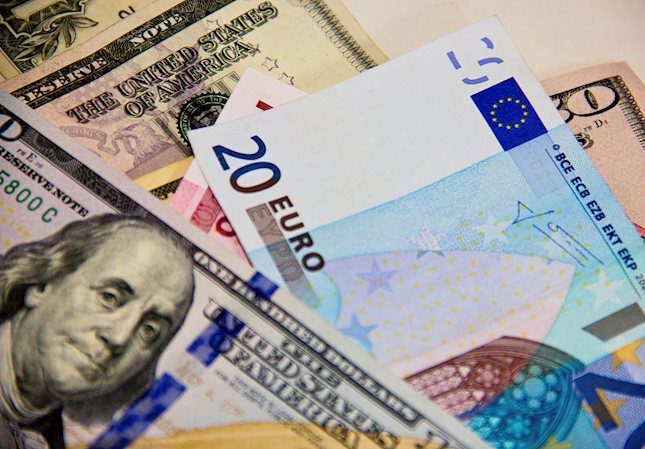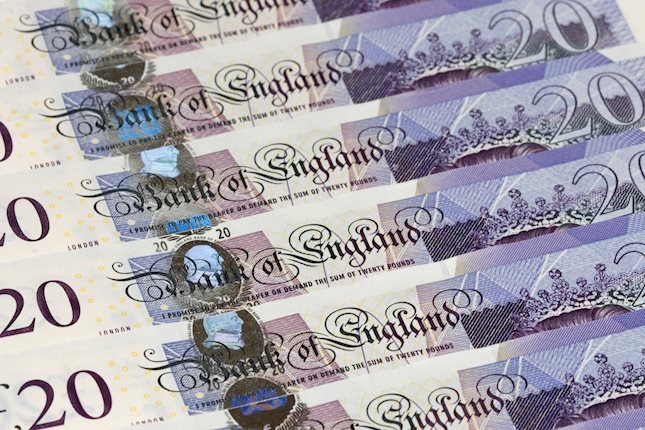- Indian Rupee loses traction on the modest US Dollar (USD) demand.
- Indian Consumer Price Index (CPI) surged 5.55% YoY in November vs. 4.87% prior, Food Inflation climbed to 8.70% vs. 6.61% prior.
- Market players will closely watch the Fed interest rate decision and the press conference.
Indian Rupee (INR) extends its downside amid modest US Dollar (USD) strength. Data released on Tuesday revealed that the Indian Consumer Price Index (CPI) came in higher than the Reserve Bank of India (RBI) target of 4.0%. Although headline inflation remained within its tolerance range of 2–6% for the third consecutive month, it has surpassed the medium-term target of 4% for the past 50 consecutive months.
Furthermore, the Consumer Food Price Index, which measures food inflation, increased by 8.70% in November from 6.61% the previous month. Last week, the RBI Monetary Policy Committee decided to keep the policy repo rate steady at 6.50%, and the MPC stated that they will closely monitor any indications of food price pressures.
Investors await the US Producer Price Index (PPI) on Wednesday ahead of the Federal Reserve (Fed) monetary policy meeting. The annual PPI figure is forecast to ease from 1.3% to 1.0% in November, while the PPI rate ex Food & Energy is expected to drop from 2.4% to 2.2% in the same period. The highlight will be the Fed interest rate decision, with no change expected. Nonetheless, investors will examine Fed Chair Jerome Powell’s comments after the meeting for fresh impetus.
Daily Digest Market Movers: Indian Rupee trades weaker amid higher inflation concern
- India’s Consumer Price Index (CPI) surged 5.55% YoY in November from 4.87% in October, according to the Ministry of Statistics & Programme Implementation.
- Indian Industrial Production for October reached a 16-month peak, rising by 11.7% compared to a 4.1% increase in the previous reading.
- Indian Manufacturing Output for October came in at 10.4% MoM versus 4.9% prior.
- The International Monetary Fund (IMF) stated that India’s economy will be one of the fastest-growing in the world over the next few years, estimating Real Gross Domestic Product (real GDP) to expand by more than 6.0% in both 2023 and 2024.
- According to the National Securities Depository, foreign investors allotted $3.7 billion in Indian equities and $800 million in debt over the six sessions in December.
- US inflation, as measured by the Consumer Price Index (CPI), climbed 0.1% MoM in November from 0% in October, while the annual CPI eased from 3.2% to 3.1% in November.
- The Core CPI, which excludes volatile food and energy prices, rose to 0.3% MoM from 0.1% in the previous month. On an annual basis, the Core CPI figure grew 4.0% YoY, matching expectations.
- The markets anticipate the Fed to maintain the benchmark overnight borrowing rate in a range between 5.25% and 5.50% at its December meeting.
Technical Analysis: Indian Rupee's constructive stance remains unchanged
Indian Rupee trades on a softer note on the day. The USD/INR pair has traded in a familiar trading band between 82.80 and 83.40 since September. According to the daily chart, USD/INR maintains a bullish vibe as the pair holds above the key 100-day Exponential Moving Average (EMA). The upward momentum is reinforced by the 14-day Relative Strength Index (RSI) that stands above the 50.0 midline.
A decisive break above the upper boundary of the trading range at 83.40 will see the next upside barrier near the year-to-date (YTD) high of 83.47, en route to a psychological round mark of 84.00. On the other hand, any follow-through selling below the critical support level of 83.00 round figure will next downside stop near the confluence of the lower limit of the trading range and a low of September 12 at 82.80, followed by a low of August 11 at 82.60.
US Dollar price in the last 7 days
The table below shows the percentage change of US Dollar (USD) against listed major currencies in the last 7 days. US Dollar was the strongest against the New Zealand Dollar.
| USD | EUR | GBP | CAD | AUD | JPY | NZD | CHF | |
| USD | 0.02% | 0.28% | 0.01% | -0.07% | -1.11% | 0.52% | 0.06% | |
| EUR | -0.02% | 0.27% | -0.02% | -0.09% | -1.13% | 0.50% | 0.04% | |
| GBP | -0.29% | -0.27% | -0.28% | -0.36% | -1.40% | 0.22% | -0.23% | |
| CAD | 0.00% | 0.02% | 0.28% | -0.08% | -1.11% | 0.51% | 0.05% | |
| AUD | 0.08% | 0.10% | 0.38% | 0.08% | -1.03% | 0.61% | 0.14% | |
| JPY | 1.11% | 1.13% | 1.38% | 1.10% | 1.01% | 1.61% | 1.16% | |
| NZD | -0.52% | -0.50% | -0.21% | -0.52% | -0.59% | -1.63% | -0.44% | |
| CHF | -0.06% | -0.04% | 0.23% | -0.05% | -0.13% | -1.17% | 0.46% |
The heat map shows percentage changes of major currencies against each other. The base currency is picked from the left column, while the quote currency is picked from the top row. For example, if you pick the Euro from the left column and move along the horizontal line to the Japanese Yen, the percentage change displayed in the box will represent EUR (base)/JPY (quote).
RBI FAQs
What is the role of the Reserve Bank of India?
The role of the Reserve Bank of India (RBI), in its own words, is "..to maintain price stability while keeping in mind the objective of growth.” This involves maintaining the inflation rate at a stable 4% level primarily using the tool of interest rates. The RBI also maintains the exchange rate at a level that will not cause excess volatility and problems for exporters and importers, since India’s economy is heavily reliant on foreign trade, especially Oil.
How do the decisions of the Reserve Bank of India affect the Rupee?
The RBI formally meets at six bi-monthly meetings a year to discuss its monetary policy and, if necessary, adjust interest rates. When inflation is too high (above its 4% target), the RBI will normally raise interest rates to deter borrowing and spending, which can support the Rupee (INR). If inflation falls too far below target, the RBI might cut rates to encourage more lending, which can be negative for INR.
Does the Reserve Bank of India directly intervene in FX markets?
Due to the importance of trade to the economy, the Reserve Bank of India (RBI) actively intervenes in FX markets to maintain the exchange rate within a limited range. It does this to ensure Indian importers and exporters are not exposed to unnecessary currency risk during periods of FX volatility. The RBI buys and sells Rupees in the spot market at key levels, and uses derivatives to hedge its positions.
Information on these pages contains forward-looking statements that involve risks and uncertainties. Markets and instruments profiled on this page are for informational purposes only and should not in any way come across as a recommendation to buy or sell in these assets. You should do your own thorough research before making any investment decisions. FXStreet does not in any way guarantee that this information is free from mistakes, errors, or material misstatements. It also does not guarantee that this information is of a timely nature. Investing in Open Markets involves a great deal of risk, including the loss of all or a portion of your investment, as well as emotional distress. All risks, losses and costs associated with investing, including total loss of principal, are your responsibility. The views and opinions expressed in this article are those of the authors and do not necessarily reflect the official policy or position of FXStreet nor its advertisers. The author will not be held responsible for information that is found at the end of links posted on this page.
If not otherwise explicitly mentioned in the body of the article, at the time of writing, the author has no position in any stock mentioned in this article and no business relationship with any company mentioned. The author has not received compensation for writing this article, other than from FXStreet.
FXStreet and the author do not provide personalized recommendations. The author makes no representations as to the accuracy, completeness, or suitability of this information. FXStreet and the author will not be liable for any errors, omissions or any losses, injuries or damages arising from this information and its display or use. Errors and omissions excepted.
The author and FXStreet are not registered investment advisors and nothing in this article is intended to be investment advice.
Recommended content
Editors’ Picks

EUR/USD clings to strong daily gains near 1.0400
EUR/USD remains on track to post strong gains despite retreating from the session high it set above 1.0430. The positive shift in risk mood, as reflected by the bullish action seen in Wall Street, forces the US Dollar to stay on the back foot and helps the pair hold its ground.

GBP/USD surges above 1.2500 as risk flows dominate
GBP/USD extends its recovery from the multi-month low it set in the previous week and trades above 1.2500. The improving market sentiment on easing concerns over Trump tariffs fuelling inflation makes it difficult for the US Dollar (USD) to find demand and allows the pair to stretch higher.

Gold price holds firm despite higher US Treasury yields
Gold prices remained flat at the beginning of the week even though the Greenback is getting battered. Higher United States Treasury bond yields kept the non-yielding metal pressured while US President-elect Donald Trump grabbed the headlines amid confusion on his tariff plans.

Ripple's XRP eyes massive rally following spike in key on-chain metric
Ripple's XRP trades near $2.40, up 1% on Monday following a 40% surge in its futures open interest. The surge could help the remittance-based token overcome the key resistance of a bullish pennant pattern.

Five fundamentals for the week: Nonfarm Payrolls to keep traders on edge in first full week of 2025 Premium
Did the US economy enjoy a strong finish to 2024? That is the question in the first full week of trading in 2025. The all-important NFP stand out, but a look at the Federal Reserve and the Chinese economy is also of interest.

Best Forex Brokers with Low Spreads
VERIFIED Low spreads are crucial for reducing trading costs. Explore top Forex brokers offering competitive spreads and high leverage. Compare options for EUR/USD, GBP/USD, USD/JPY, and Gold.